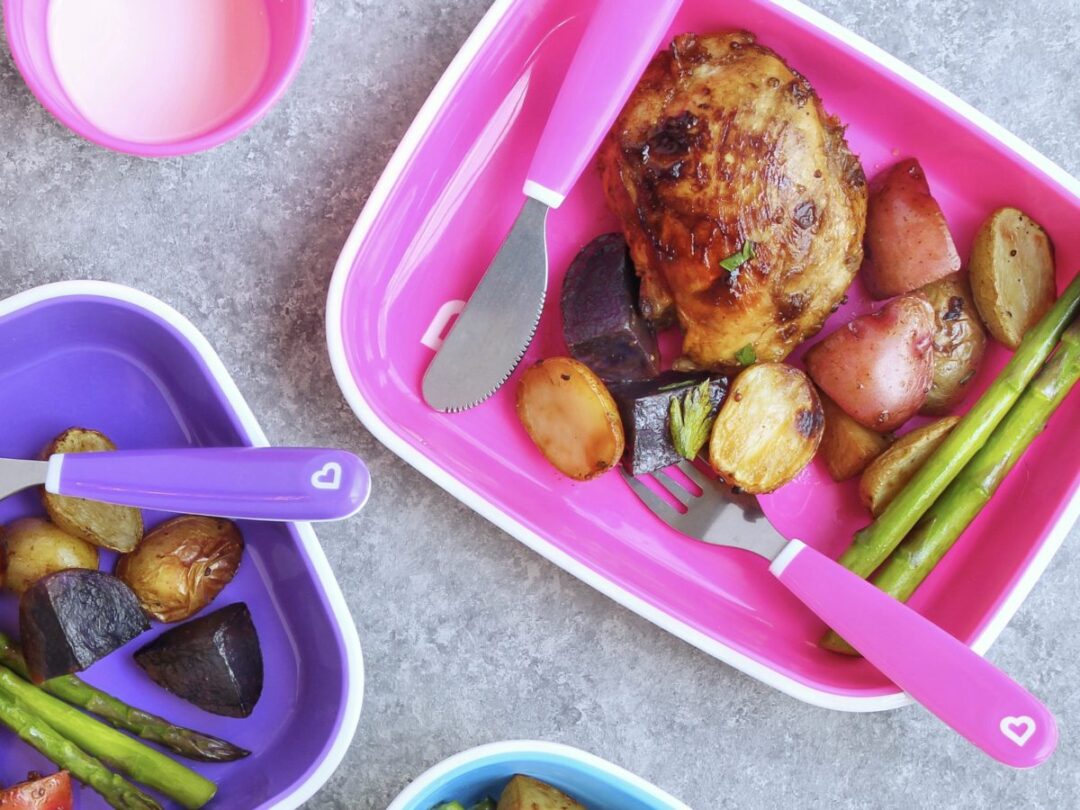Mealtime battles with a child who refuses to eat can be a major source of stress and a concerning time for many parents. Even when it’s not a major source of stress, regular food based tantrums can ruin family meals for siblings and parents.
Children to go through phases of picky eating or develop a strong aversion to certain foods. However, it’s essential to ensure they receive proper nutrition for their growth and development. In this article, we will explore effective strategies to encourage a child to eat when they refuse.
Create a Positive Eating Environment
Hard as it can be when a child is regularly having tantrums and you’re approaching mealtimes with a sense of dread, establishing a positive and relaxed atmosphere during mealtimes can have a huge influence on a child’s willingness to eat. But how do you create a positive mealtime environment?
First, encourage regular family meals where everyone sits together at the table. This promotes a sense of togetherness and makes mealtime more enjoyable. This helps to build it into a child’s routine which is really important for most children and means that the child will see parents and siblings eating and enjoying the same foods, or similar foods, as them, making it more likely that they’ll be willing to give foods a go.
Secondly, avoid Distractions. Minimise distractions such as TV, gadgets, or toys at the table. Whilst it can be tempting to use devices such as phones or tablets to calm or distract children, the last thing you want to distract them from is the food they’re supposed to be eating. This approach will also prevent fights breaking out if siblings are struggling to share. Focus on engaging conversations and make mealtime an opportunity for family bonding where a difficult child can see parents eating with them and talk about food and their likes and dislikes.
Last, create a pleasant ambiance. Make the dining area appealing with interesting placemats, attractive children’s utensils, and colourful childrens bowls and plates. It’s a really good idea to ensure that utensils and crockery is child appropriate as this can literally make it easier for them to engage with and eat their food.
Offer a Variety of Foods
Introducing a wide range of foods exposes children to different tastes, textures, and flavours. That way they’re more likely to discover things they like.
It’s a good idea to rotate the menu. This will help you to plan and make sure your child is exposed to a variety of healthy meals, including fruits, vegetables, whole grains, and proteins. Rotate these options throughout the week to prevent monotony and to expose the child to different flavours. Even if your child didn’t like something previously, when it comes round again they may decide they like it this time.
Presenting food in an appealing way can also encourage a child to engage. Arrange meals into fun shapes (the salad smiley face is a classic) or use colourful ingredients. Engaging the child’s imagination can pique their interest in trying new foods.
Serve vegetables or new foods with dips or sauces to make them more appealing. Children often enjoy the act of dipping their food and the flavours can make it more enticing.
Involve the Child in Meal Preparation
Including children in meal planning and preparation can foster their interest in food, give them a sense of pride and ownership over it and increase their willingness to eat.
Start the process by taking your child shopping for food and involve them in selecting fruits, vegetables, or other ingredients.
Encourage your child to participate in age-appropriate kitchen tasks, such as washing vegetables, stirring ingredients, or setting the table. This involvement helps them feel invested in the meal and it’s amazing how much pride a child will take in being able to tell family members that they did such and such when you were making the meal.
There are loads of places you can find child-friendly recipes both on and offline. Exploring these is an exciting process and allows children to contribute their ideas which will further build their excitement and enthusiasm.
Set a Routine and Offer Regular Snacks
We’ve already mentioned the importance of a routine but it can’t be overstated. Establishing a consistent eating schedule helps regulate a child’s hunger and reduces the likelihood of them refusing meals.
Again, fixed mealtimes are really important here. Set regular meal times and stick to them. Everyone is different but a good starting point for a routine is to offer three main meals and two to three snacks throughout the day. This routine creates a predictable pattern for the child.
Provide healthy snack options such as fruits, yogurt, or nuts. These snacks should be offered between meals to prevent excessive hunger and encourage balanced eating.
Avoid excessive drinks. Limit the consumption of sugary drinks and excessive milk or juice, as they can fill up a child’s stomach and reduce their appetite for solid foods. Of course it’s important for children to stay hydrated so always have water available.

Leave a Reply